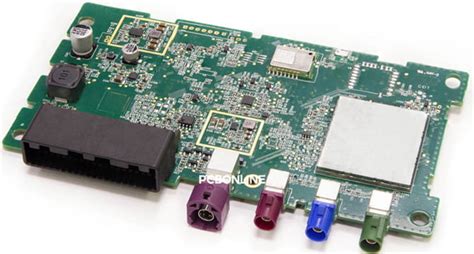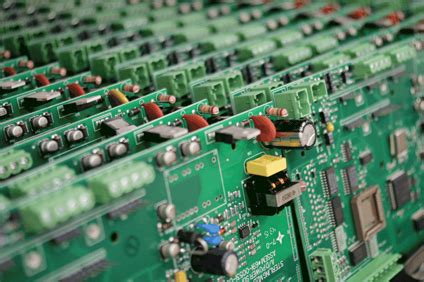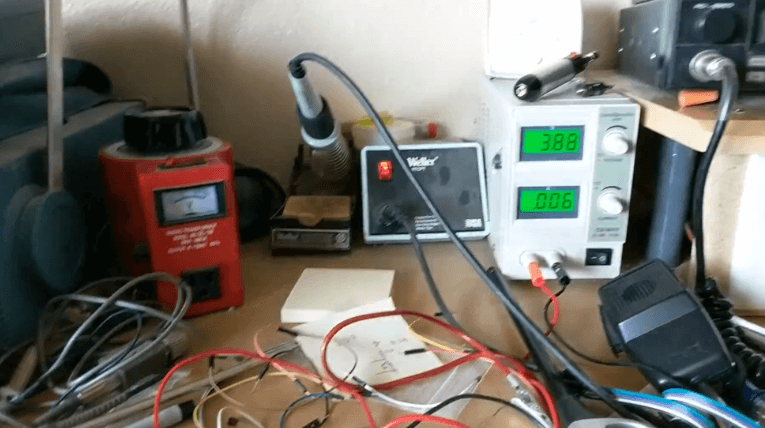Expert Guide to PCB Assembly: From Creation to Completion
Key Takeaways
Understanding the fundamental aspects of PCB assembly (PCBA) is crucial for anyone involved in electronics manufacturing. This process begins with meticulous design creation, where components and circuits are laid out with precision. The success of PCBA largely hinges on the quality of this initial design phase. It’s vital to select appropriate materials and components that not only meet performance requirements but also facilitate a smooth assembly process. Throughout this journey, employing the right tools and software can enhance workflow and efficiency. Quality control must be integrated at every stage, ensuring that both the design and the final assembly adhere to industry standards for optimal performance. As technology advances, keeping abreast of future trends in PCB assembly will provide a competitive edge, making it essential for professionals in the field to continually adapt their knowledge and skills.
Introduction to PCB Assembly: Understanding the Basics
PCB assembly, also known as PCBA, is a fundamental process in the electronics manufacturing industry that transforms abstract electronic designs into tangible products. The journey begins with the initial concept and schematic design, where engineers outline how components will interact. This is followed by the creation of a printed circuit board (PCB) layout that accommodates these components, ensuring they fit well and work effectively.
Understanding the basics of PCB assembly requires familiarity with several key elements such as circuit layout, component placement, and soldering techniques. Each of these elements contributes to the overall efficiency and reliability of the assembled circuit board. For instance, careful consideration during the design phase can significantly ease the assembly process and reduce production time, ultimately leading to cost savings.
The importance of selecting high-quality materials cannot be overstated; using subpar components can lead to product failures post-assembly. Therefore, manufacturers should prioritize quality over cost.
“Effective PCB assembly relies heavily on thorough planning and execution to avoid common pitfalls.”
This highlights how meticulous attention during the creation phase enhances not just individual assembly steps but also reinforces product quality. By employing precise practices throughout each stage—designing, component selection, and soldering—organizations can achieve successful PCB assembly, ensuring optimal product performance in their final applications.
The following table summarizes essential aspects that contribute to well-executed PCB assembly:
| Aspect | Description |
|---|---|
| Design Considerations | Placement and spacing of components |
| Material Quality | Choosing reliable components for longevity |
| Assembly Techniques | Methods like soldering for securing connections |
| Quality Control | Regular inspection during and after assembly |
In summary, mastering these fundamentals provides a solid foundation that facilitates more advanced discussions about PCB assembly technology and practices in future sections of this guide.
The Importance of PCB Design in the Assembly Process
The design of a printed circuit board (PCB) is a critical aspect that directly influences the efficiency and success of the pcb assembly process. At its core, effective PCB design ensures that all components, traces, and connections are optimally placed for both performance and manufacturability. A well-structured design minimizes potential issues during assembly, such as misalignment or insufficient space for components, which can lead to increased production costs and time delays. Moreover, good design practices promote easier pcba testing and troubleshooting after assembly. Incorporating considerations like thermal management and electromagnetic compatibility into the initial phase can further enhance the reliability of the final product. In essence, a thorough understanding of PCB design principles significantly contributes to achieving a successfully assembled circuit board, ensuring that it meets both functionality and quality standards. Such foresight in pcb assembly not only supports efficient production but also increases overall product longevity in the marketplace.
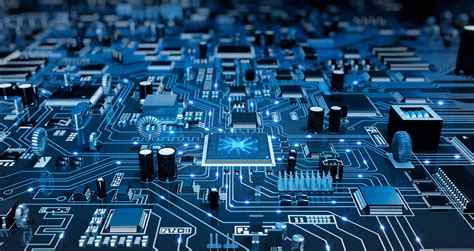
Step-by-Step Guide to Creating PCB Designs
Creating effective PCB designs is a critical step in the pcb assembly process, ensuring that the final product meets both functional and aesthetic requirements. The initial phase begins with understanding the specific requirements of the project, including the electrical characteristics and dimensions. Incorporating schematic capture is essential, as it translates electrical concepts into a visual representation that can be easily viewed and modified. After establishing your schematic, the next step involves the layout design, where you arrange components and traces on the board. This not only involves placing components efficiently to optimize space but also requires consideration of electromagnetic interference (EMI) and signal integrity.
Following this, you can utilize various software tools to simulate your design and verify that it aligns with performance expectations before moving on to actual production. Once simulations confirm viability, producing a Gerber file becomes necessary; this file serves as a blueprint for manufacturers during the actual pcb assembly phase. Additionally, it’s vital to conduct thorough documentation where all design decisions are noted — this helps in maintaining quality control throughout production. This step-by-step approach in creating PCB designs lays a solid foundation for successful pcba, ultimately influencing both performance outcomes and cost-efficiency during assembly. Through careful planning and execution, one can ensure that every aspect of the design works harmoniously in delivering an optimal electronic solution.

Essential Tools and Software for PCB Design
When embarking on the journey of pcb assembly, the first step lies in the meticulous design of the printed circuit board (PCB). This crucial phase requires a blend of creativity and precision, aided by a variety of essential tools and software. Popular design software, such as Eagle, Altium Designer, and KiCAD, provides designers with a robust platform to create complex schematics and layouts for their PCBs. These tools often incorporate features such as auto-routing, which streamlines the connection process between components, significantly reducing manual labor. Additionally, incorporating simulation capabilities allows designers to test their circuits under various conditions before moving on to physical production.
Further enhancing the design process is the availability of libraries containing pre-defined component footprints and schematic symbols. These libraries enable designers to efficiently select components that meet both functionality and size requirements, ensuring compatibility during pcba. Furthermore, employing software with collaboration features fosters team communication, allowing multiple designers to contribute simultaneously while maintaining version control.
In this digital age, it’s also essential to integrate tools that facilitate a seamless transition from design to production. Software solutions that offer integrated data management ensure that all information related to your PCB design is maintained accurately throughout the assembly process. This transition is crucial for minimizing errors during pcb assembly and streamlining overall production efficiency. By leveraging these various tools and applications in PCB design, professionals can create high-quality PCBs ready for effective assembly and reliable performance in their final applications.

Material Selection: Choosing the Right Components for Assembly
When it comes to pcb assembly, selecting the right components is crucial for the overall success and functionality of the final product. The material selection process should begin with a thorough understanding of the specific requirements of your project, including electrical characteristics, thermal performance, and mechanical stability. It’s essential to choose components that not only meet these specifications but also work harmoniously together in the context of the circuit design. For instance, capacitors, resistors, and ICs must be compatible in terms of voltage ratings and power consumption to prevent potential failures during operation.
Different types of materials come with their own sets of advantages and disadvantages. For example, using high-frequency components can enhance signal integrity in RF applications, while low-loss dielectrics are preferable for high-speed circuits. The quality of materials used in pcba significantly impacts reliability; thus, it’s wise to invest in quality over cost-saving options. Additionally, environmental factors such as temperature extremes or moisture exposure should influence your choice of materials; ensuring that selected components can withstand these conditions will prolong product lifespan.
Moreover, adhering to industry standards such as IPC-A-610 can guide manufacturers in making appropriate selections that will stand up to rigorous testing while also supporting compliance with regulatory requirements. In conclusion, careful material selection is a foundational step in achieving a successful pcb assembly, ultimately contributing to higher performance and durability in electronic devices.
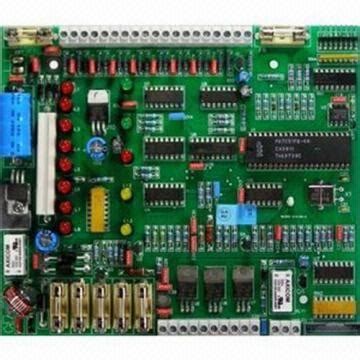
The Assembly Process: Techniques and Best Practices
The pcb assembly process involves several crucial techniques that significantly impact the quality and efficiency of the final product. Initially, it is essential to choose the right method for soldering components onto the printed circuit board. Options typically include surface mounting and thru-hole technology, both offering unique advantages depending on the application. Surface mount technology (SMT) is popular for its ability to accommodate smaller components, allowing for a more compact design. Meanwhile, thru-hole provides greater strength for heavy components, making it ideal for certain types of applications.
Once the method is determined, meticulous attention to detail during component placement becomes critical. Utilizing positioners or automated pick-and-place machines can streamline this process, enhancing both speed and accuracy in assembly. After placement, soldering is executed using techniques like reflow or wave soldering, each chosen based on the specifics of the assembly. The importance of maintaining proper temperature profiles during these processes cannot be overstated, as it ensures a robust connection while preventing damage to sensitive components.
Furthermore, implementing best practices such as maintaining clean work environments and regularly calibrating machinery contributes significantly to reducing defects in pcba products. Quality control must also be integrated throughout the entire assembly procedure. This includes inspections at various stages to confirm that each assembly meets the established specifications and standards before moving on to subsequent steps.
In conclusion, mastering these techniques within PCB assembly not only optimizes performance but also guarantees a smoother production process that can adapt to various project requirements while maintaining high standards in reliability and functionality.
Quality Control in PCB Assembly: Ensuring Optimal Performance
In the realm of PCB assembly (PCBA), the emphasis on quality control is paramount to achieving optimal performance and reliability. Effective quality control measures ensure that every stage of the assembly process meets stringent standards, which ultimately affects the functionality of the final product. To achieve this, a systematic approach is essential, beginning with thorough inspections of materials and components before assembly begins. Employing advanced techniques like Automated Optical Inspection (AOI) can significantly enhance accuracy during the manufacturing phase. Once assembly is completed, functional testing and stress analysis are crucial steps to verify that the PCBA performs under intended conditions. Additionally, integrating feedback loops into the production process allows manufacturers to continuously refine their techniques and implement corrective measures when necessary. By prioritizing comprehensive quality control practices throughout each step, manufacturers can ensure that their PCB assemblies not only meet design specifications but also exceed industry performance standards, thereby fostering greater customer satisfaction and trust in their products.
Future Trends in PCB Assembly Technology
In the ever-evolving field of PCB assembly, numerous trends are shaping the future of PCBA processes, enhancing efficiency and effectiveness. One notable trend is the increasing adoption of automation in the assembly line. Automated equipment, such as pick-and-place machines, is streamlining the placement of components onto printed circuit boards, vastly improving production speed and accuracy. Additionally, advancements in robotics are allowing for more precise soldering techniques, reducing human error and achieving higher quality standards.
Another significant trend is the integration of Artificial Intelligence (AI) and machine learning within PCB assembly systems. These technologies are being utilized for predictive maintenance and real-time monitoring, which enhances operational reliability by anticipating potential failures before they occur. The use of AI also extends to optimizing design layouts during the PCBA process, leading to better performance outcomes.
Moreover, as consumer demand for more compact and efficient devices grows, manufacturers are exploring innovative materials and component designs that allow for reduced sizes without compromising functionality. This trend towards miniaturization accompanies a shift towards more flexible circuit technologies that can adapt to various applications.
Sustainability is another critical focus area within this industry segment. With an increasing emphasis on environmentally friendly practices, companies are adopting greener processes in their PCB assembly, such as using lead-free solder materials and implementing recycling programs for electronic waste.
Overall, these trends indicate a future where PCB assembly not only meets higher production demands but also embraces innovation that leads to enhanced sustainability and efficiency across the board. As technology continues to advance, staying ahead of these trends will be vital for companies aiming to thrive in a competitive market environment.
Conclusion
In conclusion, understanding the intricacies of PCB assembly is crucial for anyone involved in the design and production of electronic devices. From the initial design phase to the final assembly, attention to detail can significantly impact the performance and reliability of your final product. The process of PCBA is not merely about joining components; it involves selecting the right materials, employing effective techniques, and adhering to best practices that ensure efficiency. Quality control plays a pivotal role throughout this journey, guaranteeing that each PCB meets high-performance standards. By integrating advanced tools and software into your workflow, as well as staying informed about industry trends, you can navigate the complexities of electronic assembly with confidence. Ultimately, mastering these essential steps in PCB assembly will lead to successful outcomes and innovations in technology.
FAQs
Q: What is PCB assembly?
A: PCB assembly refers to the process of connecting various electronic components to a printed circuit board (PCB) to create a complete electronic device. The process involves both surface-mounted and through-hole component placements.
Q: How does the PCB assembly process work?
A: The PCB assembly process typically starts with designing the PCB layout. Once the design is finalized, the required components are selected and then soldered onto the board using techniques like surface-mount technology (SMT) or through-hole soldering.
Q: What are some common types of PCBA?
A: Common types of PCBA include single-sided, double-sided, and multilayer boards. Each type has its own unique applications based on complexity and component density.
Q: Why is quality control important in PCB assembly?
A: Quality control in pcb assembly ensures that each board meets performance standards and functions correctly in its intended application. This typically involves various testing methods such as electrical testing, visual inspection, and environmental stress testing.
Q: What materials are typically used in PCB assembly?
A: The primary materials used in pcb assembly include the substrate material—commonly fiberglass or epoxy resin—conductors like copper, and various electronic components such as resistors, capacitors, and integrated circuits.
For more detailed information on this topic, please visit our comprehensive resource on PCB Assembly.



